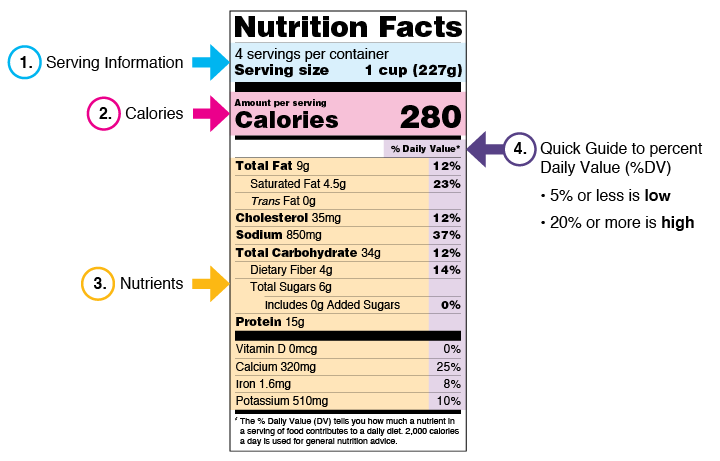Hudson Hospital And Clinic recently issued the following announcement.
Eating healthy does more than help to keep you in shape – it also lowers your chance of getting heart disease, a condition that’s responsible for one in four adult deaths in the United States each year.
The good news is that you can begin to lower your risk for heart disease as soon as your next mealtime rolls around. That’s because a heart-healthy diet can reduce your risk factors by improving cholesterol levels, lowering blood pressure and helping you lose weight.
So, if you want to improve your heart health, read on to learn which heart-healthy foods to add to your grocery shopping list, as well as which foods to avoid.
Foods that are good for your heart
The basics of heart-healthy food
Your whole cardiovascular system benefits from the energy in foods you eat. So, it’s important to eat nutrient-rich foods that are high in vitamins and minerals such as fruits, vegetables and whole grains. Fresh food and minimally processed food are the best things to keep your heart healthy.
Heart-healthy vegetables
Veggies should make up the largest part of your heart-healthy diet plan. Vegetables are packed with antioxidants and have been shown to lower heart risks. And because they are high in fiber, you’ll feel fuller longer, making it easier to cut back on higher calorie foods that aren’t so good for you.
Here are some top vegetable choices for heart health:
- Asparagus
- Broccoli
- Carrots
- Celery
- Cucumbers
- Eggplant
- Green beans
- Leafy greens
- Mushrooms
- Okra
- Onions
- Radishes
- Tomatoes
- Zucchini
Whole grains contain unique disease-fighting antioxidants that you won’t find in refined grains or other foods. Plus, they’re naturally high in fiber. The goal is to eat about 3-5 servings of whole grains each day. An easy way to do this is to swap in whole grain versions of rice, pasta and bread.
These are excellent whole grains to include in your diet:
- Barley
- Brown rice
- Cassava
- Corn, including popcorn
- Couscous
- Quinoa
- Oats
- Wild rice
- 100% whole wheat products
Like vegetables, fruits are filled with vitamins and minerals that can protect against stress and inflammation. And guess what? Fruits are also filled with lots of fiber. As a bonus for people with a sweet tooth, they’re naturally sweet.
Great fruit options for heart health:
- Apples
- Bananas
- Berries such as raspberries, strawberries and blueberries
- Citrus fruit such as oranges, lemons and limes
- Kiwi
By replacing red meat and high-fat meats with lean protein, you may be able to reduce your risk of heart attack and stroke. Nuts and fish are especially good choices because they are filled with helpful omega-3 fatty acids, vitamin D and healthy fats, which help curb inflammation, making them good for your heart.
Protein options for heart health:
- Atlantic- or Pacific-caught salmon
- Canned light tuna
- Herring
- Beans
- Eggs
- Lean poultry
- Lentils
- Tofu
A healthy diet isn’t a no-fat diet. Instead, it’s a good-fat diet. But what exactly is a good fat?
You may have heard that olive oil is one of the heathiest oils out there. Why is that? Is it because of calories? No, all oils have about the same calories. The difference is in the types of fats – olive oil contains high levels of the healthier fats (monounsaturated and polyunsaturated) and very little bad fat (saturated or trans).
In fact, a report from the American Heart Association shows that replacing oils high in saturated fats with ones that are high in unsaturated fats can reduce the risk of heart disease and is one of the ways to prevent heart attacks.
Some other examples of healthy oils and fats include:
- Avocado
- Hummus
- Nuts
- Seeds
- Olive oil
- Other vegetable oils, including corn and canola
- Oil-based dressing
What is the Mediterranean diet for heart health?
The Mediterranean diet is a way of eating that favors olive oil, nuts, whole grains and vegetables. Also, fish and poultry take the place of red meats. Based on numerous studies, people who eat a Mediterranean diet have a longer life expectancy.
Foods that aren’t so good for your heart
We covered foods that are beneficial to eat for heart health, but what about ones that aren’t?
First, know that not all processed foods are bad – after all, that bag of frozen broccoli has gone through some level of processing. But many packaged foods are ultra-processed and contain things your body doesn’t need like lots of added sugar, artificial ingredients, salt and bad fats. At the same time, highly processed foods have little of the good stuff like whole grains, fiber, vitamins and minerals.
We get that it’s tough to transition to fresh and homemade foods for every meal. No one is expecting you to give up your favorite foods entirely. Instead, try to make balanced choices and pay attention to the types of fats that are in your food.
Foods with trans fats
Trans fat is the worst type of fat for your body. That’s because trans fats increase bad cholesterol while also decreasing good cholesterol. The Federal Drug Administration (FDA) even banned companies from adding artificial trans fats to their foods back in 2015, stating that they were unsafe to eat.
While trans fats are naturally found in small amounts in some meats and dairy products, the majority of trans fats in foods are added as partially hydrogenated oil by food manufacturers. The FDA’s ban has led food manufacturers to reduce trans fats in their foods, but some foods still contain them.
You’re most likely to find trans fats in processed foods like:
- Frozen pizza
- Fast food
- Breakfast sandwiches
- Baked goods such as cakes and cookies
- Shortening
A small amount of healthy oils is an important part of your diet – they help your body to absorb different minerals, and support brain and nerve function. But not all oils are equally healthy.
These oils are on the list of foods cardiologists say to avoid or use sparingly:
- Oils such as coconut and palm oils
- Butter
- Shortening
- Lard and bacon fat
Learning how to read nutrition information
No two packaged food products are alike. For example, different brands of nuts can have different fat or sodium content, depending on how they are processed and what, if any, oils are used. Plain yogurt and Greek yogurt have very different amounts of protein. A granola bar and whole oats have very different levels of sugars and fats.
Because of this, understanding food nutrition and how to read labels can help you make healthier choices.
How to read a nutrition label
1. The nutrients listed on the label are based on one serving size. Often serving sizes are smaller than you’d think. So, it’s a good idea to measure.
2. Calories are a unit of measurement that tells us the amount of energy in one serving. Your body uses calories for energy and to be active. Everybody uses a different number of calories. To control your weight, the goal is to balance what you eat with the amount of energy you need.
3. All nutrients are shown as a percent of the daily value. The daily values are reference amounts for how much of the nutrients you should consume or not exceed each day. Depending on the nutrient, daily value is shown in grams (g), milligrams (mg) or micrograms (mcg).
4. Limit foods with high amounts of the items in red. Look for fewer than 2g of saturated fat, less than 250mg of sodium and little to no added sugar.
5. Try to eat foods with more of the items in green. These include dietary fiber, vitamin D, calcium, iron and potassium.
6. Read and rate the ingredients. In general, products that have fewer ingredients – and ones you can pronounce -- are less processed and better for you. Here are some questions to ask yourself:
- Does this food contain more than five ingredients?
- Does it contain unhealthy fats like coconut oil?
- Does it include whole grains like oats, barley and wheat flour? If so, are they near the top of the ingredient list?
- Do you know what the ingredients are?
Know the daily values for heart-healthy numbers
Try to focus on heart-healthy numbers for the following:
- Dietary fiber: Eat 25-30 grams of dietary fiber each day.
- Sugar: Limit the amount of added sugar you eat or drink.
- Salt (sodium): Limit to 1,500-2,000 milligrams each day.
- Fats: Aim for no trans fats and less than 13 grams of saturated fat each day. There’s no exact limit for the healthier monounsaturated and polyunsaturated fats. Just remember, all fats are high in calories so don’t eat too much.
So, you know to eat more fruits, vegetables and grains. And, you know how to find out the nutrition in your foods. But what’s the next step? A good place to start is with a little planning and shopping for the right foods.
Shop with a heart-healthy grocery list
Don’t go to the grocery store unprepared! If you eat fast food for lunch every day, plan out heart-healthy options for the week instead. After all, if you don’t have anything in the fridge that’s healthy – and that you want to eat – you’ll likely find yourself in the drive-through once again.
Then, when you’re shopping:
- Load up on fruits, veggies and whole grains.
- Buy most of your food from the outside edges of the store. This is where they keep the fresh foods.
- Look for foods with fewer ingredients – and ones you can pronounce.
Download the grocery store guide
Start by swapping out unhealthy snacks or meals for a healthier option
No one expects you to become a healthy eating machine overnight. The good news is that even making small steps can put you on the path to better health. Here are some examples to help you get started:
- Try oatmeal for breakfast and skip donuts or pastries. This swap increases the amount of heart-healthy whole grains while also eliminating saturated and trans fats.
- Instead of eating hot dogs or deli meat for lunch, make a trip to the salad bar and load up your plate with nutritious veggies. And to get heart-healthy fats, opt for an oil-based vinaigrette instead of creamier dressings.
- Instead of a steak, choose an oily fish like salmon for a boost in healthy fats from omega-3 fatty acids while also reducing saturated fats.
- Eat unsalted nuts instead of chips, fries or buttered popcorn to fill up with good fats and protein while reducing salt and bad fats.
- Drink water and other calorie-free beverages to cut down on calories.
It can be hard to make changes to your diet. And being heart-healthy doesn’t mean that you can never eat a hamburger, a piece of pizza or a chocolate sundae. It just means you shouldn’t eat them every day or even every week.
When you eat not-so-great food, the FDA recommends dietary tradeoffs. So, if you eat a breakfast that’s high in saturated fat, choose foods that are lower in saturated fats throughout the rest of the day. It’s all about balance and finding a healthy diet you can stick with.
And if you have a bad food day, tell yourself it’s okay and move on. You can do better tomorrow.
Help for a heart-healthy lifestyle
Eating right goes a long way toward a healthy heart but it’s only one piece of the puzzle. Exercise is super important too – in fact, a heart-healthy diet combined with lifestyle changes like regular exercise have been shown to reduce the risk of coronary artery disease by up to 75%.
You’ll also want to watch risk factors such as high stress, diabetes and being overweight. And, if you smoke or vape, taking steps to quit is one of the best things you can do for your heart.
If you need help managing your risk factors – or figuring out what to eat –contact your primary care doctor.
Original source can be found here.

Source: Hudson Hospital And Clinic





 Alerts Sign-up
Alerts Sign-up